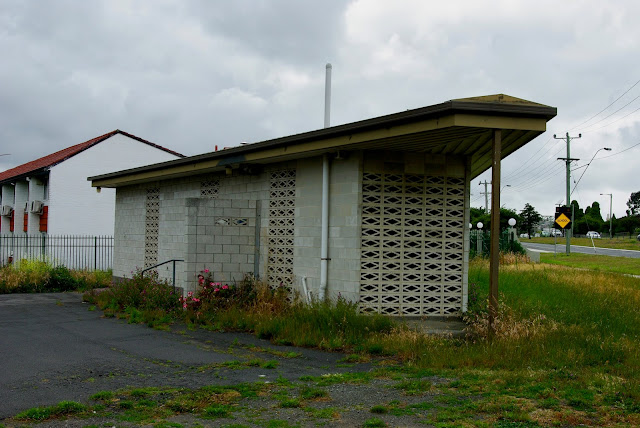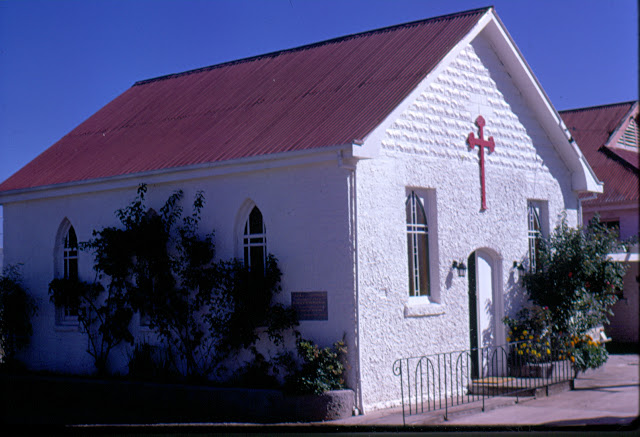No. 316 - St Christopher's at Goodwood

Goodwood is a suburb of Greater Hobart and part of the City of Glenorchy. Most houses in Goodwood were built in the 1950s as public housing. The suburb is also home to light industry and docks. The former Anglican church of St Christopher’s, the patron saint of travellers, appropriately lies on edge of the busy Brooker Highway that bisects Goodwood and Glenorchy. The church is now derelict and covered with graffiti. It has degenerated to the point where it hardly resembles a church and could easily be mistaken for a toilet block! A view of Google Street maps chronicles its decline over the last decade. Its spire has now gone, which a few years back would have at least been a clue to its former function as a place of worship. In 1954 the Army Chapel at Brighton Camp was moved to Goodwood to serve as a temporary Anglican church. This was demolished in 1974 to make way for St Christopher’s. The triangular-shaped building was designed by Reverend R. M. Potter and was constructed of conc...




